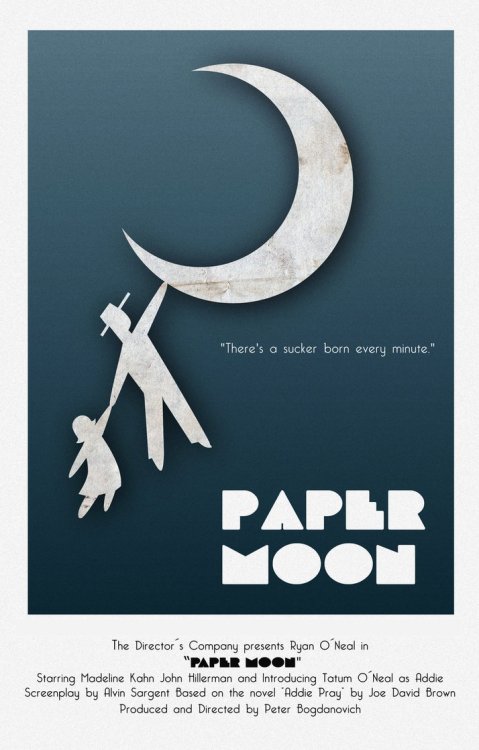Paper Moon (Peter Bogdanovich, 1973): USA
Reviewed by Charles Doan. Viewed on DVD.
 Peter Bogdanovich’s Paper Moon is a light-hearted comedy placed before the melancholic backdrop of the Great Depression. Unlike many of the Hollywood films produced during the 70s, Paper Moon, which released in 1973, audaciously reaches back, both in time and in visual style, and is anything but dated. Its minimalistic, yet cheerful tendencies illustrate the consensual mindset polar opposite to those living under the oppression of the depression. Due to the exponential amount of energy exhibited by Ryan O’Neal and his daughter Tatum O’Neal, the youngest person to have been awarded an Academy Award, this upbeat road movie shows us a more bearable and often times humorous depiction of depression-era America.
Peter Bogdanovich’s Paper Moon is a light-hearted comedy placed before the melancholic backdrop of the Great Depression. Unlike many of the Hollywood films produced during the 70s, Paper Moon, which released in 1973, audaciously reaches back, both in time and in visual style, and is anything but dated. Its minimalistic, yet cheerful tendencies illustrate the consensual mindset polar opposite to those living under the oppression of the depression. Due to the exponential amount of energy exhibited by Ryan O’Neal and his daughter Tatum O’Neal, the youngest person to have been awarded an Academy Award, this upbeat road movie shows us a more bearable and often times humorous depiction of depression-era America.
When a con-man by the name of Moze Pray (Ryan O’Neal) attends the funeral of an ex-lover, he unexpectedly encounters young Addie Loggins (Tatum O’Neal), an intelligent girl whose identity is bolstered by her prepubescent charm, balanced with a boyish austerity. The nine-year-old’s deceased mother acts as leverage to her relatives; allowing them to pressure Moze into escorting Addie to her aunt in St. Louis, Missouri. Because Moze shares a “similar jaw-line” to Addie, she sticks with Moze, stubbornly trying to convince him he is her father. The two set out toward their destination, making countless stops on the way. Despite his innocent passenger, Moze continues forcing widows into buying bibles along the way in order to survive the bitter times.
Working side-by-side with screenwriter, Alvin Sargent, Bogdanovich adapts Joe David Brown’s novel, Addie Pray, highlighting the effects of the Great Depression in the midwest. Influenced by John Ford’s infatuation with rural America, Bogdanovich’s road movie is composed with a strong foundation of the spectacular landscapes in the background accompanying the hilarity of the quirky interactions in the foreground. And with László Kovács’ strong understanding of the environment, the audience is exposed to the most spectacular cinematic experience.
An outstanding technical aspect of Paper Moon is the use of modern standards of filmmaking to show more of what films of the 1930s lack. This includes nuances such as the subtlety of the sound design composed by Kay Rose and Frank Warner focusing on the little bits that make up the whole, or the innovative camera equipment which produces a variety of stylized shots impossible to find in 1930s cinema.
Paper Moon is a film that shows the compassion people share during hardships and the endurance of the human psyche. With the playfulness of interactions and the lightheartedness of the story, I would not pass an opportunity to view this again.
6 Comments
Jump to comment form | comments rss [?] | trackback uri [?]